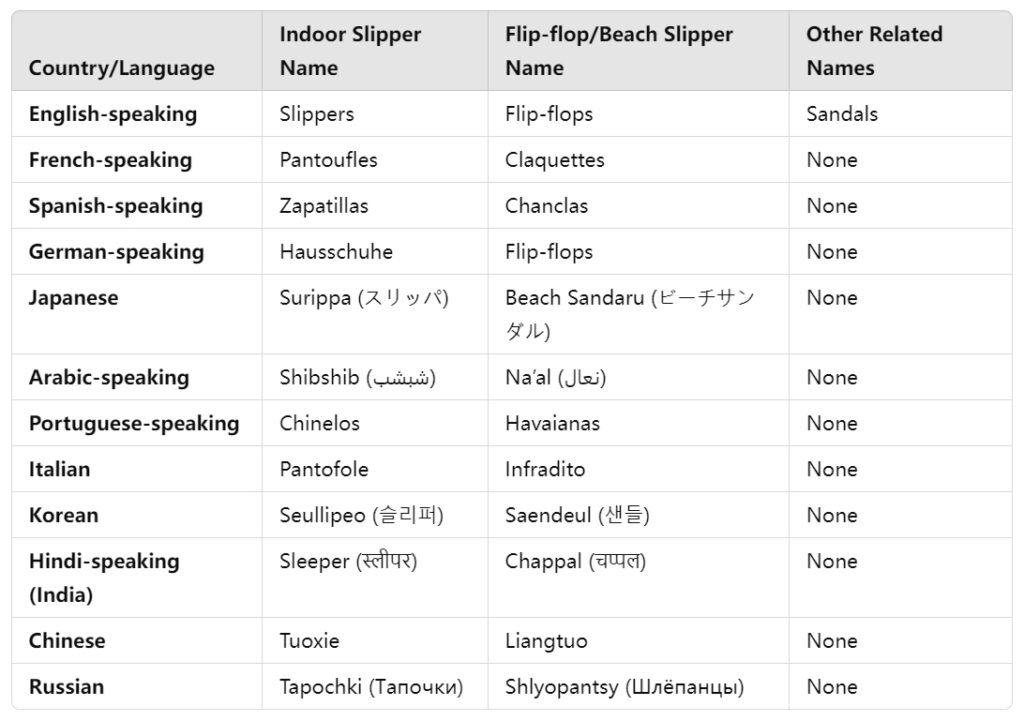Understanding slipper name across the world is not just a fun fact.It’s a critical piece of information for businesses that are going to sell slippers in other countries. The different names reflect cultural differences, consumer behavior, and market dynamics that can impact your branding, marketing, and sales. As a slipper manufacturer, I want to share with you how the names of slippers change around the world, what it means for your international business, and how you can use data to optimize your marketing.

Slipper Names and Cultural Context Around the World
The Global Map of Slipper Names
Slippers are an everyday item, but their slipper names change depending on the country or region. For example:

You can also see iconic slippers from different coutries in below video
Impact of Slipper Naming Variations on Business
The Importance of Local Slipper Names for SEO
In today’s digital world, search engines are how people find you. The way people search for slippers changes based on the local names. For example, if someone in Spain is searching for “Chanclas,” they won’t find your flip-flops unless you’re using the local term in your marketing.
Optimizing your SEO with local slipper names is essential for being discovered in international markets.. For example:
- English-speaking markets favor “Slippers” and “Flip-flops.”
- French users might search for “Pantoufles” or “Claquettes.”
- In India, “Chappals” dominate consumer searches for casual footwear.
- In the southern U.S., targeting terms like “House Shoes” could capture additional interest.
By using these terms in your product descriptions, website metadata, and ads, you make sure you’re showing up where people are looking for you.

Marketing Strategies for International Slipper Markets
Building a Multi-Language Product Management System
One of the biggest challenges in global business is managing product classifications across languages. The same style of slipper might have different names in different markets. You need a system to manage that.
For example, you could have a central database that links the different styles of slippers (e.g., indoor, outdoor, beach) to the different names in different languages. This way, you can keep your branding consistent while recognizing the local preferences. Also, having this system in place helps you with your supply chain because you can categorize and label your products correctly for international shipping and retail.

Leveraging Cultural Differences in Advertising
Cultural sensitivity is crucial to successful international marketing. The differences in slipper names give you an opportunity to create marketing campaigns that resonate with people in different countries. For example:
- In Japan, you could create an emotional connection with people by talking about slippers and the tradition of hospitality. You could talk about the etiquette of offering slippers to guests.
- In India, you could talk about handcrafted Chappals and the beautiful embroidery on them. This would appeal to people who are interested in traditional and artisanal products.
- In Turkey, you could tell the story of Nalın slippers and how they were used in the bathhouses. This would be a way to differentiate your slippers in a market that’s focused on wellness.
Conclusion
Slipper naming variations are more than just different words. They are a window into how people think, what they value, and how they behave. By understanding these differences, you can optimize your SEO, manage your product categories, and create marketing campaigns that are culturally sensitive.
If you have any questions about slippes, please visit our website https://evaslippers.com/product/ for more information.

